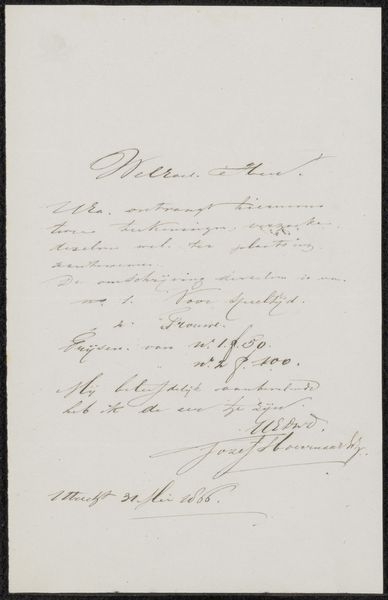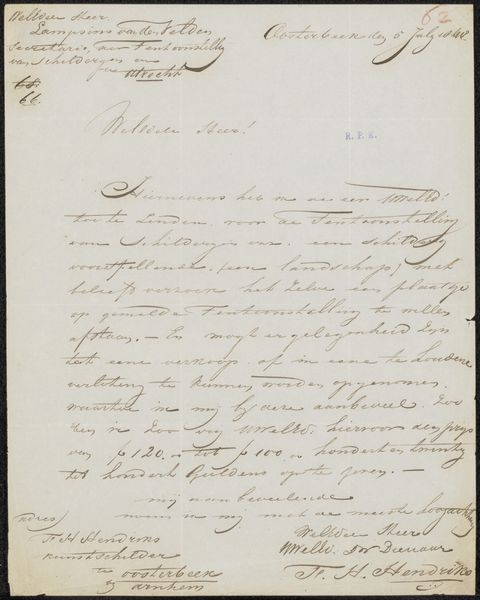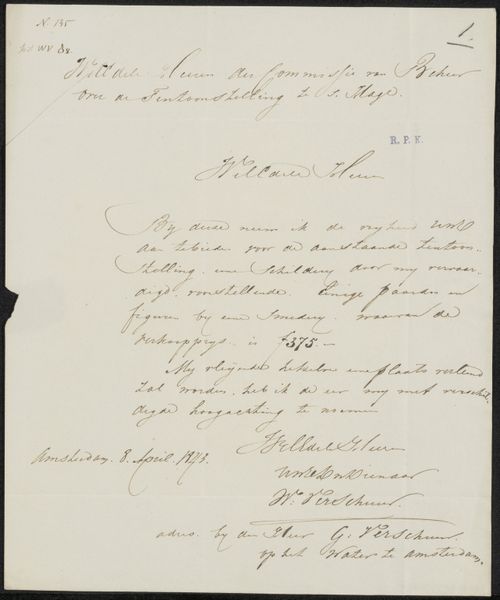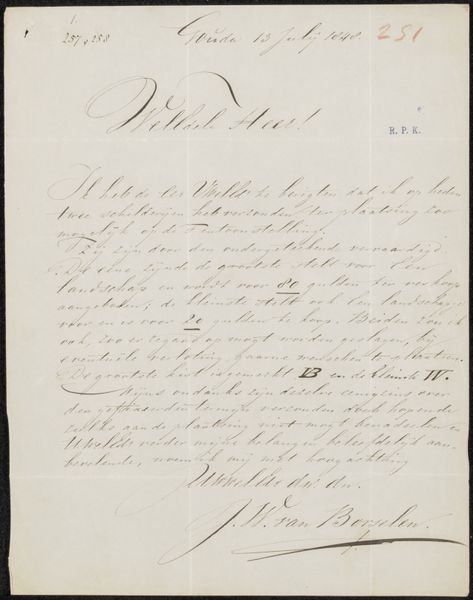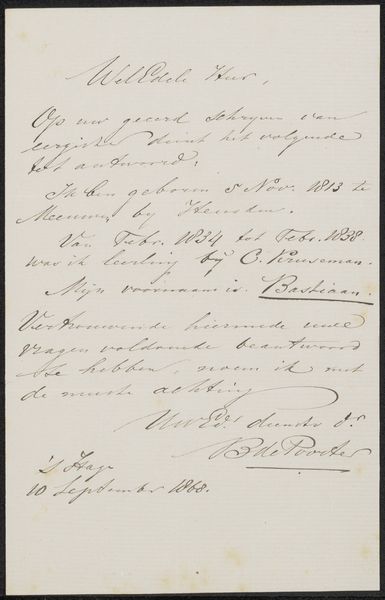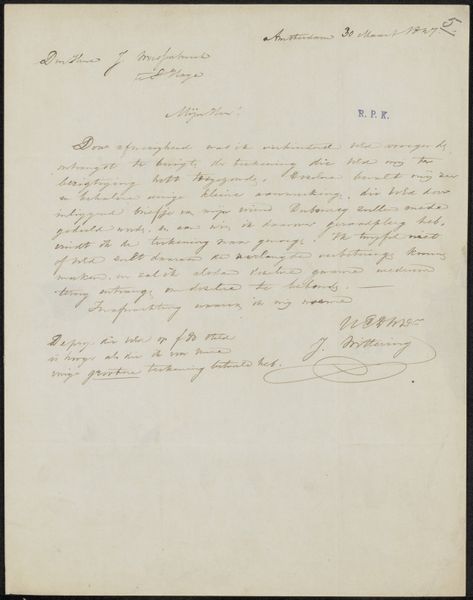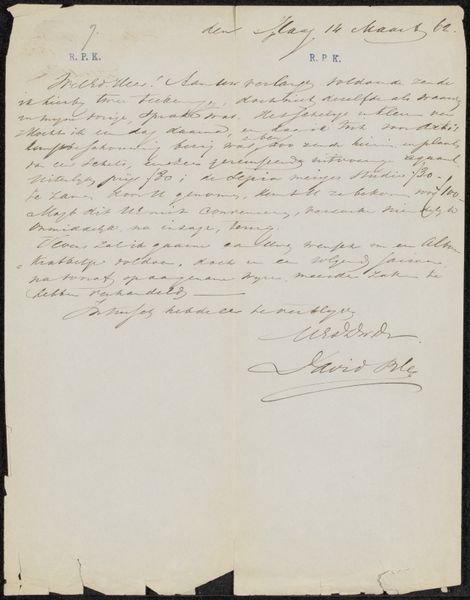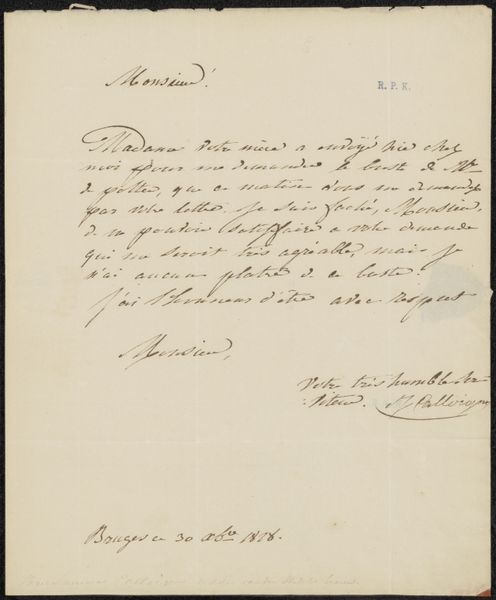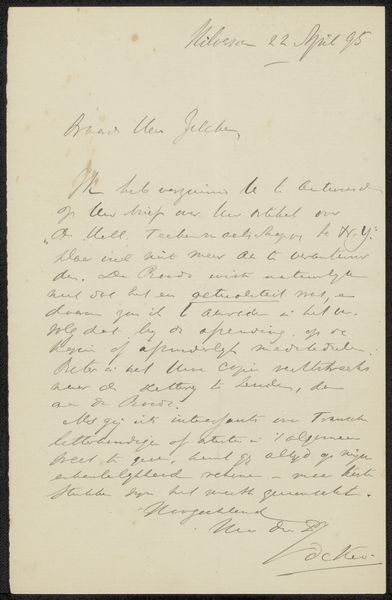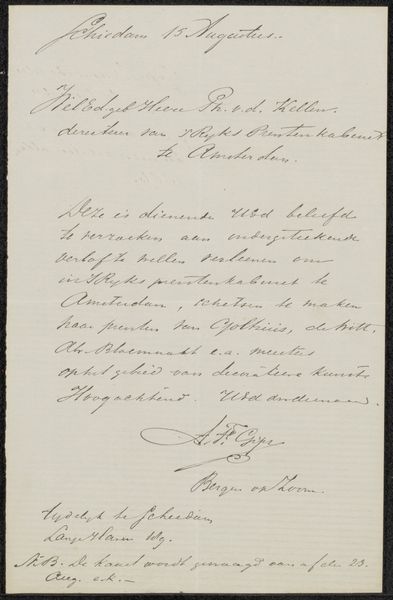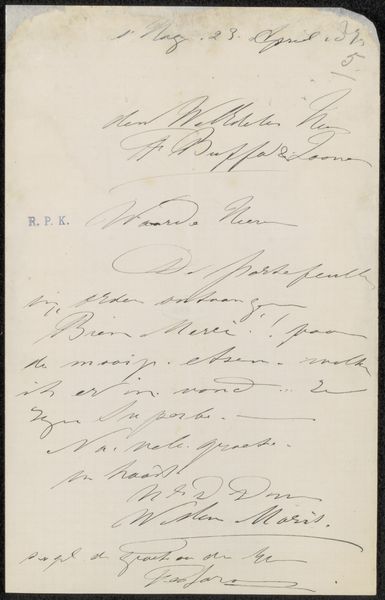
Brief aan de praeses van de Nederlands Hervormde diaconie Possibly 1866
0:00
0:00
bastiaandepoorter
Rijksmuseum
drawing, paper, ink, pen
#
drawing
#
hand-lettering
#
ink paper printed
#
hand drawn type
#
hand lettering
#
paper
#
personal sketchbook
#
ink
#
hand-drawn typeface
#
ink colored
#
pen work
#
sketchbook drawing
#
pen
#
sketchbook art
Copyright: Rijks Museum: Open Domain
Curator: This intriguing artwork from the Rijksmuseum is entitled "Brief aan de praeses van de Nederlands Hervormde diaconie," which translates to "Letter to the chairman of the Dutch Reformed Diaconate," and it likely dates back to 1866. Editor: My initial impression is that it has a subdued elegance. The ink on paper conveys a sense of intimacy, almost like a personal note discovered tucked away. The density of the handwriting also seems to communicate care and intent. Curator: Indeed, and the penmanship is fascinating in its structure. Look at the interplay between the formal, almost calligraphic quality of certain letterforms, and the hurried, pragmatic strokes elsewhere. The varied pressure suggests a writer deeply engaged with their task. Editor: And the social implications, I think, are quite significant. The diaconate held considerable sway within communities, administering aid and exerting influence. This letter would provide an interesting glimpse into the relationships within those networks of power. Curator: Quite so, with careful attention paid to its layout, as text functions as design element within the frame of the sheet itself. See how the text isn't strictly confined but dances around the edge of the sheet almost refusing the margins. The pen-work emphasizes key terms, subtly underscoring its intent for the reader, it demands, and in ways begs for your attention. Editor: Knowing something about the economic conditions of the time makes you wonder about what it could have been about—perhaps seeking resources for their communities in times of struggle. Curator: That seems like a plausible hypothesis, which reveals how art is rarely autonomous but tethered to external realities. We bring to it our assumptions and the artwork, I’d suggest, invites one to question what it already knows and expects. Editor: Right, which helps one move away from romanticized views about the period as these letters can give tangible data around that era of history and governance. I leave now with more concrete considerations. Curator: As do I—reminded to respect art's multifaceted impact beyond just the visual, including, here, an instance into 19th century written correspondence.
Comments
No comments
Be the first to comment and join the conversation on the ultimate creative platform.

